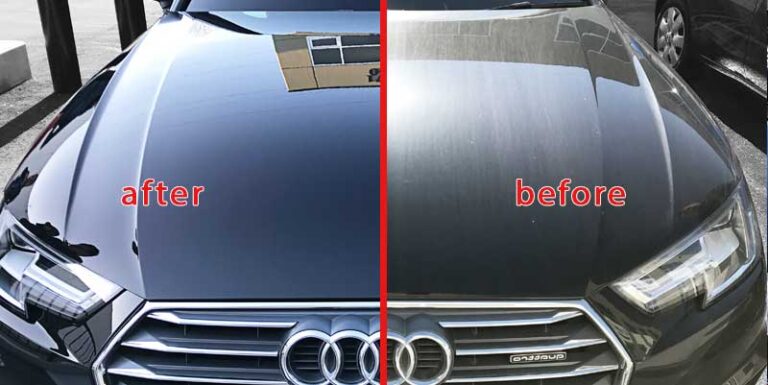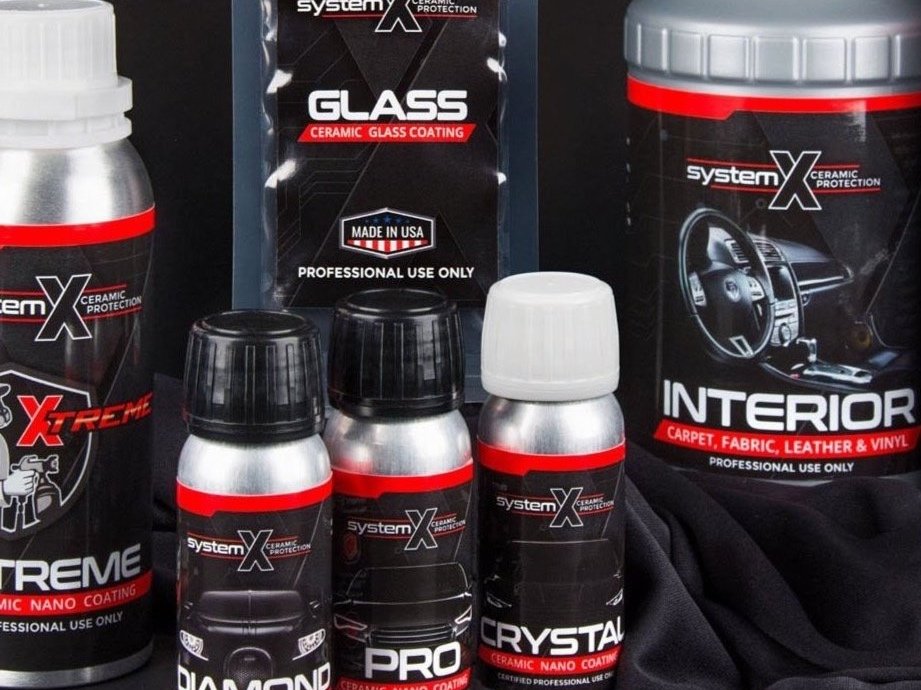Professional Strategies Used in Ceramic Coating Philadelphia for a Perfect Finish
Professional Strategies Used in Ceramic Coating Philadelphia for a Perfect Finish
Blog Article
Why Ceramic Coating Is the Ultimate Remedy for a Flawless Complete
Ceramic covering has become a leading option for those seeking a perfect finish for their cars, many thanks to its amazing sturdiness and safety features. This sophisticated fluid polymer not just bonds perfectly with factory paint yet additionally provides an awesome barrier versus usual hazards such as scrapes, UV rays, and ecological contaminants. In addition, its hydrophobic residential properties streamline maintenance while improving visual charm. Recognizing how this innovation compares to conventional techniques and discovering its application subtleties can expose also extra about its value. What elements truly set ceramic finish apart?
What Is Ceramic Coating?

When used correctly, ceramic coating develops a hydrophobic surface that fends off water and dirt, making it less complicated to maintain and clean. Unlike conventional waxes or sealers, which normally provide temporary defense, ceramic coatings can last for several years, depending upon the product high quality and application technique. The procedure of using ceramic finish requires precise preparation, including complete cleaning and in some cases repaint adjustment, to make certain optimum bonding and effectiveness.
Ceramic layers are not limited to vehicle surfaces; they can likewise be utilized on different materials, consisting of glass, metal, and plastics, offering a flexible service for enhancing protection. On the whole, ceramic finishing represents a substantial development in surface security technology, integrating both visual and useful benefits for a wide variety of applications.
Benefits of Ceramic Finish
While lots of surface area protection alternatives exist, the benefits of ceramic covering stand apart due to its unique residential properties and long-lasting performance. Among the key benefits is its outstanding toughness. Ceramic Coating Philadelphia. Unlike traditional wax or sealants that need frequent reapplication, ceramic coverings provide a resistant layer that can last for several years, dramatically lowering upkeep initiatives
One more noteworthy advantage is improved defense against ecological impurities. Ceramic finishings create a hydrophobic surface that drives away water, dust, and numerous pollutants, making it much easier to cleanse. This attribute not only preserves the car's look but also minimizes the risk of rust and oxidation, particularly in extreme weather condition conditions.
Furthermore, ceramic layers use exceptional resistance to UV rays, stopping fading and degradation of paint over time. This UV security is crucial for keeping the visual worth of surfaces and vehicles exposed to direct sunshine.
Additionally, the shiny finish achieved with ceramic finishing improves the general visual allure, providing surface areas a showroom-quality luster. Overall, ceramic layers stand for a considerable improvement in surface defense technology, offering long-lasting advantages that cater to both practical and aesthetic demands.
Just How It Works
Comprehending the science behind ceramic finishings reveals just how they give such amazing defense and longevity. At its core, a ceramic finishing is a liquid polymer that chemically bonds with the car's factory paint. This bonding develops a protective layer that is both oleophobic and hydrophobic, repelling water, dirt, and oil. The main element of many ceramic finishes is silicon dioxide (SiO2), which is obtained from quartz. This compound adds to the coating's hardness and resistance to scrapes, UV rays, and ecological pollutants.
The application process entails multiple steps, including surface preparation, which is web crucial to attaining ideal bond. Once applied, the coating goes through a curing procedure, during which it sets and forms a semi-permanent bond with the paint surface area. This bond is what identifies ceramic finishes from typical waxes and sealers, offering a longer-lasting protective barrier that can sustain for years.
Furthermore, the thickness of the finish can improve its protective qualities, guaranteeing that it can hold up against harsh problems. Eventually, the scientific research of ceramic coverings combines sophisticated materials with cutting-edge application strategies to supply an exceptional level of defense and aesthetic enhancement for vehicles.
Contrast With Typical Approaches
When contrasted to conventional paint defense techniques such as sealers and waxes,The benefits of ceramic finishes end up being specifically apparent. While waxes supply a short-term sparkle, normally lasting a few weeks to a number of months, ceramic coatings provide a long-lasting protective layer view publisher site that can sustain for several years. This toughness significantly reduces the regularity of reapplication, making ceramic finishings a more cost-effective option in time.
In addition, conventional approaches usually call for considerable prep work and multiple applications to attain a satisfying degree of protection. In contrast, ceramic layers bond at a molecular degree with the vehicle's surface, developing a robust guard against ecological contaminants like UV rays, acid rain, and roadway salts. This bond boosts the car's resistance to scrapes and swirl marks, which prevail with conventional waxes and sealers.
Moreover, the hydrophobic residential properties of ceramic layers push back water and dust, resulting in much easier cleaning and upkeep. In contrast, wax and sealant-treated surface areas can draw in grime, necessitating even more frequent cleaning - Ceramic Coating Philadelphia. On the whole, ceramic finishes not just supply premium defense but likewise deliver a much more enduring and visually appealing finish, developing them as the preferred option for critical vehicle owners
Application and Maintenance Tips

Making use of a foam applicator, apply the finishing in small areas, complying with the supplier's guidelines relating to density and overlap. Permit adequate view treating time in between layers, typically 1 day, to guarantee proper bonding. After application, it is vital to avoid direct exposure to water or severe aspects for a minimum of a week to allow the layer to fully cure.
For upkeep, wash the automobile consistently with pH-balanced soaps and prevent abrasive products. Touchless cars and truck cleans are suggested to lessen scraping. In addition, using a ceramic maintenance spray can enhance the finish's hydrophobic residential or commercial properties and durability. Regular evaluations for any kind of indicators of wear will certainly assist maintain the finish's integrity and maintain that immaculate coating.
Final Thought
In verdict, ceramic finishing arises as a remarkable option for accomplishing a perfect automotive surface. By creating a robust bond with factory paint, ceramic layer effectively guards versus scratches, UV rays, and ecological pollutants.

Report this page